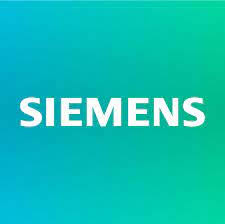Manufacturing Data Collection Software
A Manufacturing Data Collection Software bridges the digital and physical aspects of production by automatically capturing and relaying live data from machines and operational processes. It continuously monitors critical manufacturing metrics and quality thresholds, thereby boosting efficiency and ensuring premium product standards.
This solution fuels smart manufacturing by channeling granular shop floor insights into centralized analytics, enabling agile decision-making and systematic process enhancement.
Manufacturing Data Collection Challenges
Manufacturing data collection is often hampered by disconnected systems, manual inputs, and inconsistent data formats. These limitations lead to incomplete insights, slow decision-making, and reduced process visibility. Without automated, real-time data capture, manufacturers struggle to optimize performance, ensure quality, and drive continuous improvement.

What Does Manufacturing Data Collection Software Do?
Manufacturing Data Collection Software captures real-time production data from machines, sensors, and operators across the shop floor. It logs key metrics like cycle times, downtime, quality checks, and throughput for performance analysis. This data-driven approach enhances visibility, improves decision-making, and supports continuous improvement in manufacturing operations.

Key Features of Data Collection Software
Integrated Data System
Centralizes data from multiple shop floor sources into a unified platform. Enables seamless integration, real-time updates, and consistent information flow for comprehensive process oversight.
Real-Time Capture
Continuously gathers live production data from machines, sensors, and operators to provide instant visibility and immediate analysis for proactive operational decisions and optimized performance.
Automated Reporting
Generates scheduled, customizable reports and dashboards with minimal manual intervention. Converts raw data into actionable insights, facilitating continuous improvement and efficient decision-making.
Benefits of Using Data Collection Software
Enhanced Visibility
Provides immediate access to live production data, ensuring managers can quickly spot issues and make informed decisions.
Data Accuracy
Automates data capture to minimize errors, ensuring reliable, consistent records for quality control and analysis.
Faster Decisions
Offers real-time insights, enabling prompt responses to production changes and accelerating decision-making processes.
Increased Efficiency
Reduces manual data entry and streamlines operations, allowing for smoother production workflows and optimized resource usage.
Regulatory Compliance
Maintains precise digital records with full traceability, easing audits and meeting industry regulatory standards.
Cost Reduction
Optimizes resource allocation by eliminating waste and reducing downtime, ultimately lowering overall operational expenses.
Siemens Opcenter Execution
Snic Solutions is recognized as one of the elite organizations partnered with Siemens as a value-added reseller of Opcenter.
/About%20Page/Blake%20Digital%20Transformation%20Solutions.png?width=500&height=500&name=Blake%20Digital%20Transformation%20Solutions.png)

Software Integration
Manufacturing Data Collection Software integrates with MES, ERP, SCADA, and QMS systems to capture real-time data from machines, sensors, and operators across the production floor.
What happens when you integrate?
Integration ensures accurate, automated data flow into enterprise systems. This eliminates manual entry, enhances traceability, and supports faster, data-driven decisions for process improvement.

From Our Blog
Stay up to date with what is new in our industry, learn more about the upcoming products and events.

How is a Gantt Chart Used in Manufacturing Process?
In manufacturing, Gantt charts are used to simplify production by visualising task…
.png)
Top Advantages of Laboratory Automation Systems
Are you curious about how laboratory automation can benefit your lab? Laboratory a…
.png)
What Is A Bidirectional LIMS?
LIMS bidirectional communication, or what is LIMS bidirectional, refers to the two…
Frequently Asked Questions
Have Question? We are here to help
How to collect data in manufacturing?
Manufacturers collect data using sensors, IoT devices, barcode scanners, and shop floor software to capture real-time metrics like machine status, production output, downtime, and quality performance.
What is the best software for collecting data?
MES (Manufacturing Execution Systems), SCADA, and IoT-enabled platforms like Siemens Opcenter, Ignition, and Tulip are among the best for collecting, visualizing, and analyzing manufacturing data.
What are the five types of software used in manufacturing operations?
What is PDC in the manufacturing industry?
PDC stands for Production Data Collection—the real-time capture of data related to machines, labor, and process performance on the shop floor.
What type of software is used for data collection?
MES, SCADA, and shop floor data collection (SFDC) software are commonly used to gather real-time data from machines, operators, and connected devices.
How is data collected in manufacturing?
Data is collected through sensors, RFID/barcode systems, machine PLCs, operator input stations, and integrated software that connects to MES or ERP platforms.
What are the 5 M's of lean manufacturing?
-
Man – Labor and workforce
-
Machine – Equipment and tools
-
Material – Raw and processed materials
-
Method – Processes and procedures
-
Measurement – Metrics and data used for improvement
What is MDM in manufacturing?
In manufacturing, MDM stands for Manufacturing Data Management—the practice of managing product data, machine performance data, and process parameters to support decision-making and efficiency.
How confident do you feel with where the company is going?
We will begin in this chapter by dealing with some general quantum mechanical ideas. Some of the statements will be quite precise, others only partially precise. It will be hard to tell you as we go along which is which, but by the time you have finished the rest of the book, you will understand in looking back which parts hold up and which parts were only explained roughly.
Partner With Us To Reduce Your Technical Debt
Snic Solutions is recognized as one of the elite organizations partnered with Siemens as a value-added reseller of Opcenter.
/About%20Page/Blake%20Digital%20Transformation%20Solutions.png?width=500&height=500&name=Blake%20Digital%20Transformation%20Solutions.png)
